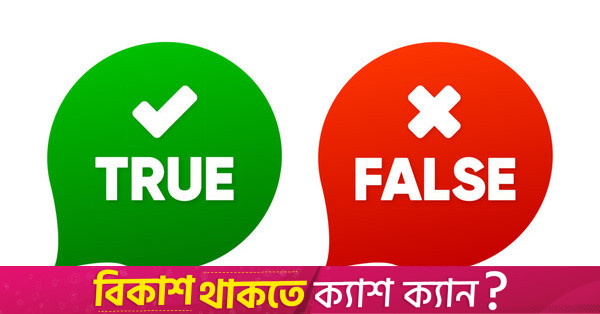This article has been published by The Business Standard on May 8, 2024
Tackling misinformation to safeguard the integrity of Bangladesh’s cricket discourse
In Bangladesh, cricket is more than just a sport; it’s a passion that unites millions of fans.
However, amidst the excitement of matches and tournaments, a darker trend is emerging: the proliferation of rumours and baseless speculation – in the form of misinformation that threatens the integrity of the cricket landscape.
Especially in social media, the circulation of rumours and baseless speculation are widespread, whether news about player transfers, team selection controversies, or behind-the-scenes drama, can distort the narrative of surrounding cricket events and sow seeds of doubt among fans.
Keep updated, follow The Business Standard’s Google news channel
Instead of writing genuine news and analysis, many click-hungry outlets engage in sensationalised reporting that not only adds fuel to the fire, attracts more clicks and shares, but ultimately spreads false information.
However, this newfound reach has also given rise to a culture of sensationalism, where virality often takes precedence over accuracy and integrity, undermining the integrity of cricket discourse.
The recent debut of Shathira Jakir Jesy as the first female on-field umpire in the Dhaka Premier League (DPL) was supposed to be a moment of progress and celebration for cricket in Bangladesh.
However, the match soon became embroiled in controversy surrounding the dismissal of Prime Bank’s Mushfiqur Rahim, with doubts about whether the fielder’s foot had touched the boundary ropes while completing the catch.
Rather than addressing the real issues, certain media outlets sensationalised the event, and opted for clickbait headlines, stirring up unnecessary controversy and diverting attention from matters of actual significance.
“Mushfiqur, Mahmudullah’s teams refuse to play under a female umpire.” Such headlines not only misrepresented the situation but also led to a divisive online discourse, with netizens quick to take sides based on false premises rather than factual analysis.
So why did the media choose to muddy the waters of this storyline?
The answer lies in the race for attention, where truth often takes a backseat to sensationalism, with every word, phrase, and image carefully crafted to maximize engagement rather than accuracy.
In March, a recent marketing campaign by a mobile financial service provider, featuring cricket stars Tamim Iqbal and Mehidy Hasan Miraz, ignited a firestorm of controversy.
Moreover, the involvement of a prominent sports bulletin has added a layer of complexity to the discourse, highlighting the perils of misinformation in society.
That leaked conversation has been promoted as exclusive news; nowhere was it mentioned that it was part of a marketing campaign.
That cleverly orchestrated advertisement not only fueled speculation but also eroded trust in the media and marketing practices.
The aftermath of this controversy should serve as a wake-up call for both media outlets and marketing agencies.
A few days ago, another rumour took hold: reports suggesting that the head coach of the Bangladesh cricket team, Chandika Hathurusinghe, would not return to Bangladesh.
A media outlet claimed to have published screenshots of Hathurusinghe’s speech, which fueled the speculation.
However, the idea that BCB would sack Hathurusinghe just a month and a half before the T20 World Cup is irrational.
Furthermore, In Bangladesh, the influence of content creators and self-proclaimed cricket pundits exacerbates the spread of misinformation in cricket discourse.
In recent years, the rise of video content in sports journalism has brought a concerning trend: the spread of false narratives, rumours, and sensationalist reporting that threatens the integrity of the sport.
Competition between sports journalists in making video content and rush to report breaking news has resulted in the circulation of unverified information, leading to confusion and misinformation among fans.
Such practices not only mislead fans but also undermine the trustworthiness of sports journalism.
At the centre of these swirling rumours is the comeback of Tamim Iqbal to international cricket.
However, amidst the anticipation of his return, some sports reporters regularly feature videos discussing the Tamim issue on his YouTube channel, portraying a dramatic relationship between Tamim and BCB.
This constant stream of news about Tamim’s comeback has led to confusion and scepticism among fans and observers, with many questioning the authenticity of the reports.
Without a commitment to accuracy and responsible reporting, the very essence of the sport is at risk of being tarnished by sensationalized stories and false information.
How can we tackle the scourge of misinformation and safeguard the integrity of Bangladesh’s cricket discourse?
Ultimately, the fight against misinformation and sensationalism requires a collective effort from all stakeholders, from journalists and media outlets to cricketing authorities and fans.
Sports journalists must resist the temptation to prioritise clicks and views at the expense of truth, striving instead to provide accurate, balanced, and responsible coverage of sporting events.
Additionally, the Bangladesh Cricket Board and other governing bodies should address the spread of misinformation within cricket, implement strict regulations for those who spread rumours, and ensure that cricket remains untarnished by falsehoods and inaccuracies.
Fact-checking and verification should be standard practices to encounter and seek out credible sources of news and analysis.
Ultimately, together brands, celebrities, media outlets, and fans can uphold the integrity of the sport and preserve its credibility and reputation for the next generations by collectively challenging and debunking the cricket rumor mill.









